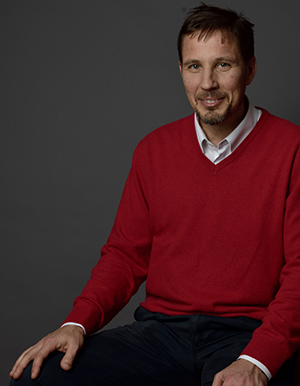Ricardo O. Louro Lab

 |
The Inorganic Biochemistry and NMR Laboratory is devoted to the structural and functional characterization of redox proteins that participate in the anaerobic bioenergetic metabolism of microorganisms, using biophysical methods. |
|
Ricardo O. Louro Phone (+351) 214469332 | Extension 1332 |
|
 |
Research Interests
This laboratory is currently engaged in the study of the molecular bases for coupling exchange of electrons with exogenous solid substrates to energy conservation in several anaerobic organisms. Iron based anoxygenic photosynthesis is one of the most ancient forms of metabolism that left geological evidence soon following the origin of Life on Earth, whereas extracellular metal respiration is fast becoming a hot-spot of biotechnological research on the development of novel bioremediation strategies for metal contaminated sites, and for the development of microbial fuel cells for environmentally sustainable power generation.
These bioenergetic processes rely on the presence of complex networks of electron transfer proteins that provide the link between the extracellular solids and the membrane associated metabolism where energy transduction takes place and ATP is produced. A large fraction of the proteins that have been assigned to these bioenergetic networks are cytochromes but the structure and detailed functional mechanism of the majority of them is not known.
Lack of detailed knowledge on the energy metabolism of metal-respiring organisms has been identified as a fundamental barrier to the optimisation of applications in microbial fuel cell technology and bioremediation. In the IBN laboratory this issue is being tackled by integrating structural, thermodynamic and kinetic data on the proteins and enzymes of these bioenergetic networks in order to understand at the molecular level their functional properties. NMR spectroscopy is uniquely suited for collecting structural and dynamic information from the proteins under study because in recent years the size and complexity of biological macromolecules that can be studied in detail by this technique has increased considerably. It is combined with other spectroscopic methods, fast transient kinetics methods and electrochemical methods to provide the experimental characterization of the target proteins. This reductionist approach forms the basis for the progressive assembly of a systemic description of the complex network of redox proteins that ensures controlled electron exchange with the cell exterior in a way that is coupled to ATP generation.
Our ultimate goal is to apply this knowledge for the optimization of microbial fuel cells capable of improved energy generation form renewable sources, and for the enhancement of bioremediation processes of sites contaminated with metals and radionuclides.
Group Members
- Catarina Paquete, Assistant researcher, team leader
- Bruno Fonseca, Researcher
- Alexandra Alves, Researcher
- Haris Nalankath, Marie-Curie fellow
- Ricardo Soares, PhD Student
- Sander Noordam, PhD Student
- Maria Firmino, PhD Student
- Busra Bayar, PhD Student
Selected Publications
-
Paquete, C.M., Rosenbaum, M.A., Bañeras, L., Rotaru, A. and Puig, S. “Let's chat: Communication between electroactive microorganisms Bioresour. Tecnhol.(2022), 347, 126705 DOI:10.1016/j.biortech.2022.126705
-
Soares R, Costa NL, Paquete CM, Andreini C, Louro RO, A new paradigm of multiheme cytochrome evolution by grafting and pruning protein modules, Mol Biol Evol (2022) 39, DOI:10.1093/molbev/msac139
-
Trindade IB, Coelho A, Cantini F, Piccioli M*, Louro RO*, NMR of paramagnetic metalloproteins in solution: Ubi venire, quo vadis?, J Inorg Biochem (2022) 234, 111871, DOI: 10.1016/j.jinorgbio.2022.111871
-
Madjarov J*, Soares R, Paquete CM, Louro RO, Sporomusa ovata as catalyst for bioelectrochemical carbon dioxide reduction: A review across disciplines from microbiology to process engineering, Frontiers in Microbiology (2022) DOI:10.3389/fmicb.2022.913311
Laboratory's Website
For further information please visit the laboratory's website
Bioquímica Inorgânica e RMN (PT)
No grupo de Bioquímica Inorgânica e RMN estudamos organismos que vivem à custa de minérios metálicos e as proteínas que lhes conferem a capacidade desse modo de vida único. Muitas dessas proteínas são vermelhas e são semelhantes à hemoglobina do sangue mas transportam electrões em vez de oxigénio. Chamam-se citocromos e a estrutura e modo de funcionamento da maioria destes não são ainda conhecidos. O método de Ressonância Magnética Nuclear em conjunto com outros métodos biofísicos proporciona a possibilidade de elucidar as características estruturais e funcionais destas proteínas e enzimas. Deste modo poderemos determinar como as diferentes proteínas interactuam entre si para realizar a sua função fisiológica. Este conhecimento vai permitir optimizar o desempenho de pilhas que utilizam estes organismos para produzir electricidade, chamadas pilhas de combustível microbianas, e desenhar métodos mais eficientes de bioremediação de locais contaminados com metais pesados ou radioactivos.







